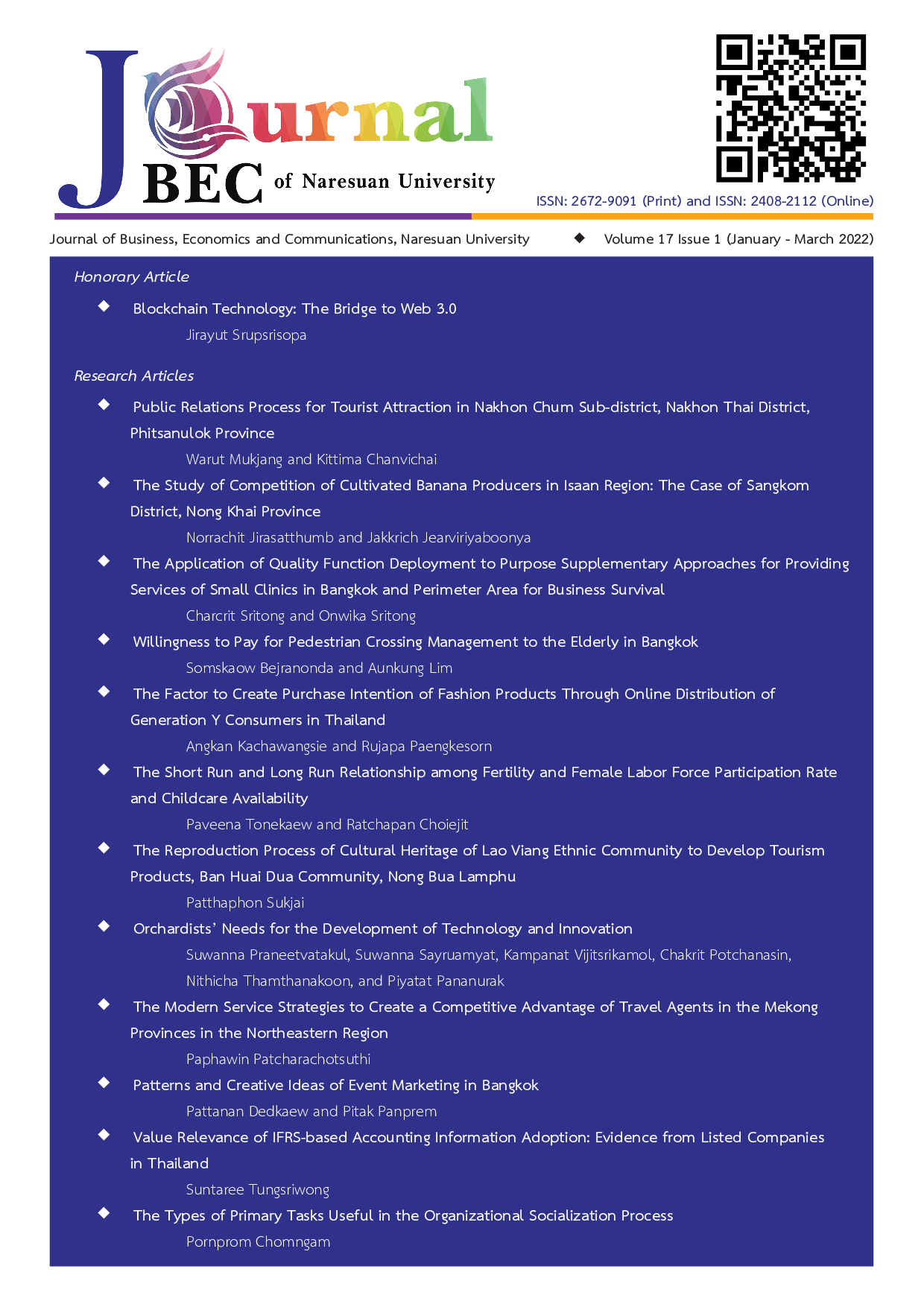Orchardists’ Needs for the Development of Technology and Innovation
Main Article Content
Abstract
This article aims to summarize the situation of problem and barriers, and to explore the need for technology and innovation in the production of fruit orchards. The study analyzed by a survey of 295 farmers and data from in-depth interviews with 31 farmers following the 5-Whys concept. The results show that the most important problem is climate variability, which cause the problems of plant pathology, insect pest and low rate of flowering. For these reasons, fruit planters require to develop accurate climate forecasting technology at the field level, easy-to-use and inexpensive technology for soil quality and soil nutrient analysis, new varieties resistant to climatic variability, plant pathology and insect pest. Moreover, the size of the production area and the type of fruit trees affect different levels of the above problem indicating the different technological requirements. This study suggests that the developed technologies should vary to suit different both plated area and types of fruit trees leading to modern agriculture effectively.
Article Details

This work is licensed under a Creative Commons Attribution-NonCommercial-NoDerivatives 4.0 International License.
References
Department of Agriculture Extention. (2018). Statistic Report for Agricultural Production: Perennial Crop "Fruit". Retrieved December 25, 2018 from Department of Agricultural Extension: http://production.doae.go.th
Joe-Air , J., Tzu-Shiang , L., En-Cheng , Y., Chwan-Lu , T., Chia-Pang , C., Chung-Wei , Y., et al. (2013). Application of a web-based remote agro-ecological monitoring system for observing spatial distribution and dynamics of Bactrocera dorsalis in fruit orchards. Precision Agric, 14(3), 323-342.
Lopez-Vega, H., Tell, F., and Vanhaverbeke, W. (2015). Where and how to search? Search paths in open innovation. Research Policy, 45(2016), 125-136.
Mansyah, E. and Sutanto, A. (2020). Tropical Fruit Research and Development Programs of Indonesian Tropical Fruits Research Institute (ITFRI). IOP Conf. Ser.: Earth Environ. Sci, 583(1), 1-4.
Office of Agritural Economics. (2018). Agricultural Economic Outlook 2018 and Trend in 2019. Bangkok: Office of Agricultural Economics, Thailand.
Spradlin, D. (2012, September 1). Are You Solving the Right Problem? Harvard Business Review, 84-93.
Sritongchuay, T., Kremen C., and Bumrungsri, S. (2016). Effects of Forest and Cave Proximity on Fruit Set of Tree Crops in Tropical Orchards in Southern Thailand. Journal of Tropical Ecology, 32(4), 269-279.
Tripathi, L., Atkinson, H., Roderick, H., Kubiriba, J., and Tripathi, J. N. (2017). Genetically Engineered Bananas Resistant to Xanthomonas wilt Disease and Nematodes. Food and Energy Security, 6(2), 37-47.
World Health Organization. (2011). WHO patient safety curriculum guide: multi-professional edition. Malta: World Health Organization.
Yahia, E. M. (2006). Modified and Controlled Atmospheres for Tropical Fruits. Stewart Postharvest Review, 5(6), 1-10.


